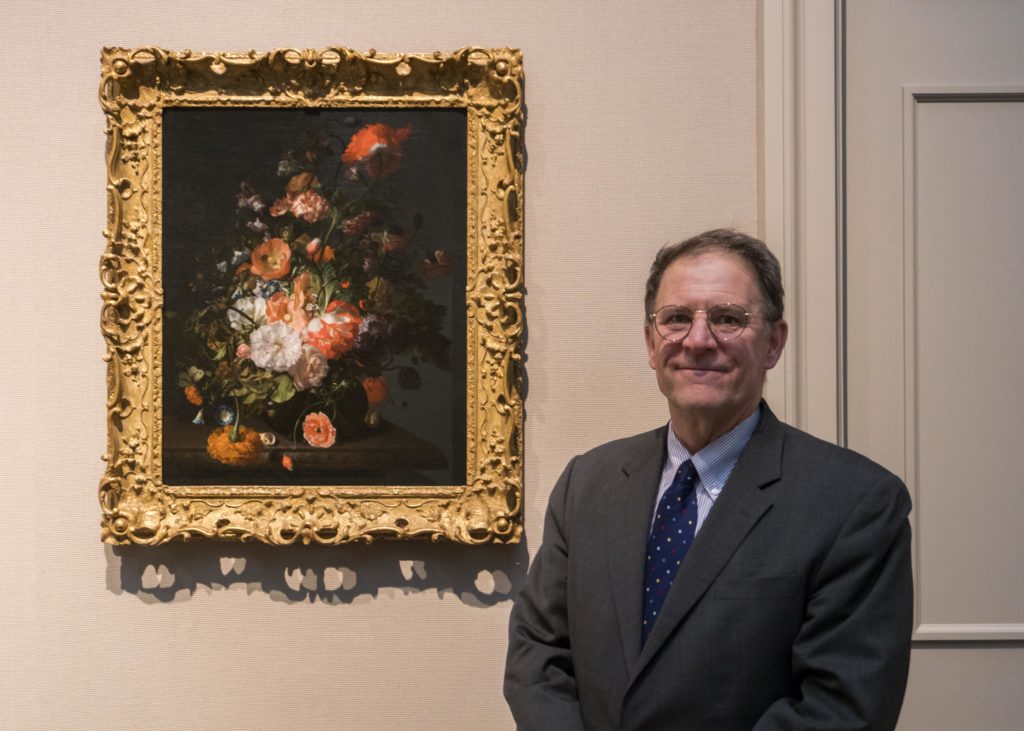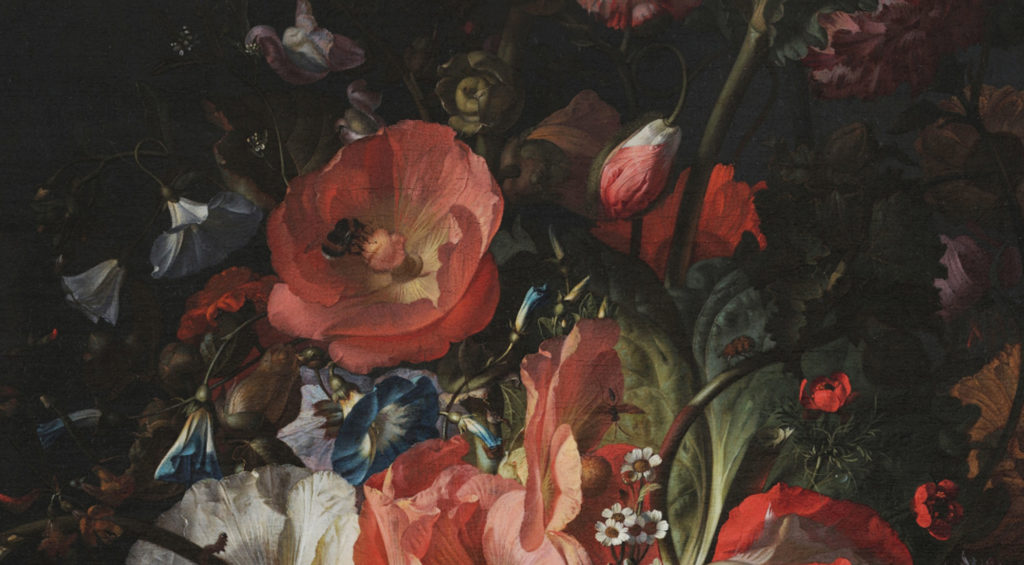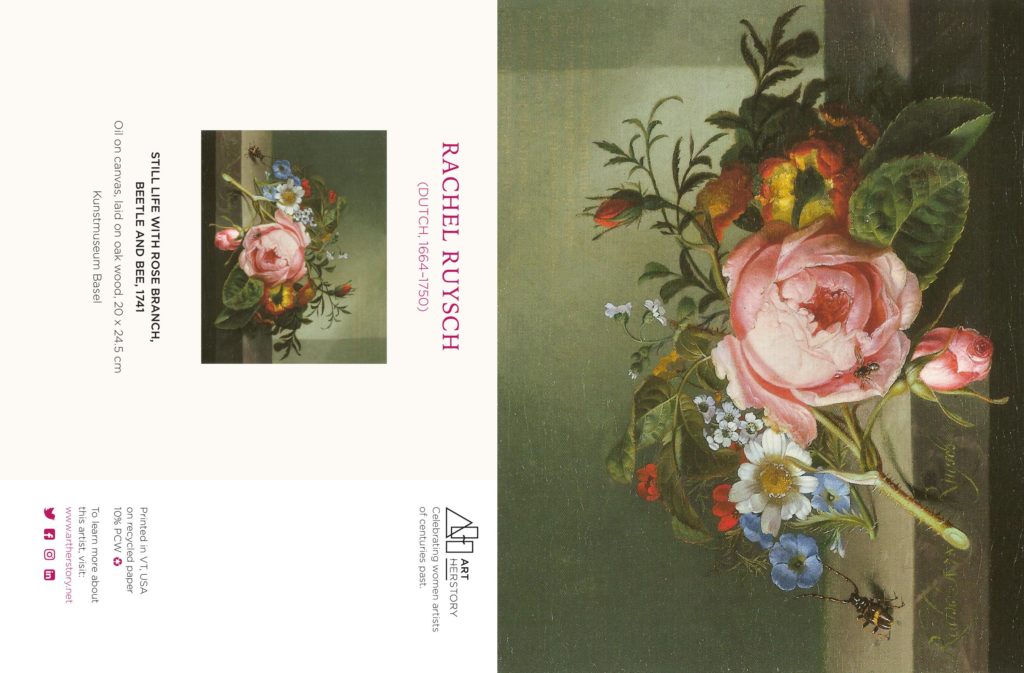CODART votes the Toledo Museum of Art’s painting into its new Canon
Guest post by Lawrence W. Nichols, Senior Curator, the Toledo Museum of Art

Against a dark background, in the style of Dutch still life painting from the seventeenth century, Rachel Ruysch (1664–1750) composed Flower Still Life (about 1726), a lush floral arrangement, including many flowers that would never actually bloom at the same time. While Flower Still Life may be among her finest works, it is but one of many examples of still life paintings for which she is renowned.

The Toledo Museum of Art is pleased that an international network of curators of Dutch and Flemish art, CODART (Curators of Dutch Art), has selected Rachel Ruysch’s still life to be among the 100 Dutch and Flemish works of art that make up the first CODART Canon of historically important works of art before 1750.
Ruysch has been called the most successful and the best-documented female painter of the Dutch Golden Age. In comparison to the hundreds of male painters known during this same period, very few women were active as artists. Other women artists included Judith Leyster, Gesina ter Borch, Clara Peeters and Maria van Oosterwijk.
The daughter of a professor of anatomy and botany, Ruysch likely became familiar with the flora work through him. By age 15, she was studying with the still life artist Willem van Aelst (1627–about 1683). From this background of scientific and artistic studies, she learned to capture the essence of nature in her own flower paintings.

She continued to paint throughout her long life, despite having 10 children with her artist husband, Juriaen Pool, whom she married at age 29. She completed her final painting at age 83.
While her gender prevented her from joining the Guild in Amsterdam (though she was admitted to the Guild in The Hague), the quality of her work attracted patrons and she enjoyed an international reputation. She served as court painter to the Elector Palatine, Johann Wilhelm von Pfalz, in Düsseldorf from 1708 to 1716—and throughout her lifetime, her fame never waned. Today her work appears in museums around the world.
Acquired by the Toledo Museum of Art in 1956, Ruysch’s Flower Still Life was recently restored, removing yellowed varnish.

Ruysch’s sumptuous floral composition, which includes a bee, a caterpillar and a butterfly, is set before a stone niche. In a spherical glass vase resting on a marble ledge she has painted not only a profusion of blossoms, but also buds, leaves, and sinuous stems.
The intricate and luxurious bouquet includes a variety of poppies, white and pink roses, hollyhocks, phlox, snapdragons, a purple martagon lily, orange daisies, red and white carnations, African marigolds, and morning glories—a mid-summer bouquet of a single growing season.

Typical for her practice, the artist placed in the center the brightest and lightest flowers and endowed depth to the arrangement through darker tones at the edges. Such attention to aesthetic details and formal devices attest to Ruysch’s remarkable technique, as well as to her skill at artifice.
The Toledo Museum of Art is happy to have the painting in the permanent collection—and to a greater degree, the arts community is fortunate to have so much of her work preserved in museums around the world.
Dr. Lawrence W. Nichols is the William Hutton Senior Curator, European & American Painting and Sculpture before 1900 at the Toledo Museum of Art. He is the author of The Paintings of Hendrick Goltzius (2013) and a contributing author to Frans Hals: Family Portraits (2018).
As of November 2020, Art Herstory offers a Rachel Ruysch note 166! Visit the shop for details. See also the Art Herstory Rachel Ruysch resource page.

Another Art Herstory blog post about a CODART Canon masterpiece:
A Clara Peeters for the Mauritshuis, by Dr. Quentin Buvelot
More Art Herstory blog posts to do with natural history illustration:
Louise Moillon: A pioneering painter of still life, by Lesley Stevenson
Rachel Ruysch’s Vase of Flowers with an Ear of Corn, by Lizzie Marx
Women and the Art of Flower Painting, by Ariane van Suchtelen
Barbara Regina Dietzsch: Enlightened Flower Painter, by Andaleeb Badiee Banta
Madeleine Françoise Basseporte’s Hyacinths at the French Court, by Mary Creed
Alida Withoos: Creator of beauty and of visual knowledge, by Catherine Powell
Books, Blooms, Backer: The Life and Work of Catharina Backer, by Nina Reid
Curiosity and the Caterpillar: Maria Sibylla Merian’s Artistic Entomology, by Kay Etheridge
The Protofeminist Insects of Giovanna Garzoni and Maria Sibylla Merian, by Prof. Emma Steinkraus
More Art Herstory blog posts to do with Dutch/Flemish women artists:
Rachel Ruysch at Munich’s Alte Pinakothek, by Erika Gaffney
lida Withoos: Creator of Beauty and of Visual Knowledge, by Catherine Powell
Women and the Art of Flower Painting, by Ariane van Suchtelen
Thérèse Schwartze (1851–1918), by Ien G.M. van der Pol
Anna Maria van Schurman: Brains, Arts and Feminist avant la lettre, by Maryse Dekker
From a Project on Women Artists: The Calendar and the Cat Lady, by Dr. Lisa Kirch
Levina Teerlinc, Illuminator at the Tudor Court, by Louisa Woodville
Women Artists of the Dutch Golden Age at the National Museum of Women in the Arts
Gesina ter Borch: Artist, not Amateur, by Dr. Nicole E. Cook
Rachel Ruysch (1664-1750), by Erika Gaffney
Susanna Horenbout, Courtier and Artist, by Dr. Kathleen E. Kennedy




